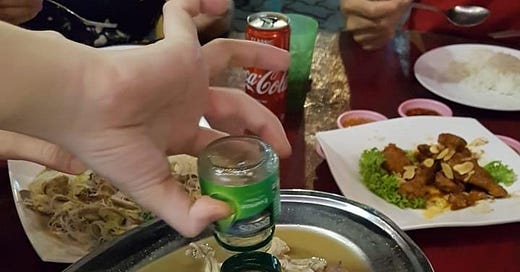There’s chicken soup - everyone knows chicken soup, it is comfort and nourishment in a pot - and then, there’s chicken essence. What is chicken essence you ask? It is when you slow-cook chicken without any water, until it is gently purged of its natural juices, so that when you open the lid, you have a chicken wrung of its goodness and a mere bowlful of liquid. Literally, the essence of chicken. It is so precious a commodity - one chicken yielding one small bowl of essence - that it is said to be reserved for three groups of people: the sick, new mothers in confinement, and students going for important examinations.
I have to clarify, though, that there is the homemade stuff, and then there is the bottled vial that many of us Singaporeans are familiar with. Brand’s chicken essence was all the rage when I was growing up - it purportedly helps with one’s focus and intellectual acuity. To Singaporean mothers convinced that scoring well in exams was the key to success, it was an easy sell. When I was younger, a pre-examination ritual was to down a glass vial of chicken essence with my breakfast. Interestingly over the years, I’ve even seen restaurants using it as an ingredient, such as this frog leg & chicken essence dish I had at a zichar eatery years ago:
While I had imagined Brand’s chicken essence to be an Asian tradition that got repackaged and made more marketable, the company earns its from Henderson William Brand, the royal chef at Buckingham Palace in the 1800s, who prepared an easy-to-digest chicken consomme for King George IV. The process for making Brand’s chicken essence, according to this video, is as follows: chicken stock is prepared by cooking minced chicken under high heat and pressure. The fat is removed and the chicken soup is reduced to a concentrate. Caramel colour is then added for a consistent rich dark brown appearance.
The Chinese technique for chicken essence is far gentler.




